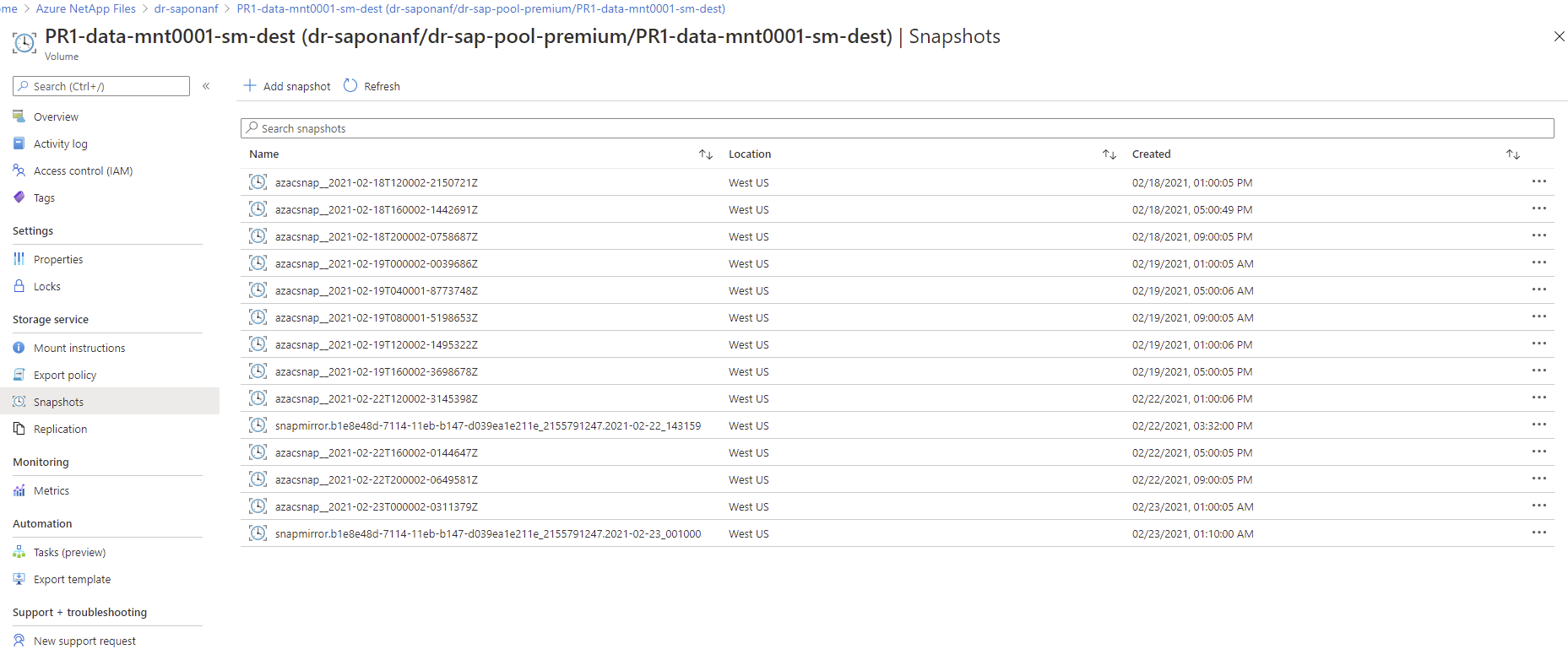Monitoring ANF Cross-Region Replication
 Suggest changes
Suggest changes


The following three screenshots show the replication status for the data, log backup, and shared volumes.
The volume replication lag time is a useful value to understand RPO expectations. For example, the log backup volume replication shows a maximum lag time of 58 minutes, which means that the maximum RPO has the same value.
The transfer duration and transfer size provide valuable information on bandwidth requirements and change the rate of the replicated volume.
The following screenshot shows the replication status of HANA data volume.

The following screenshot shows the replication status of HANA log backup volume.

The following screenshot shows the replication status of HANA shared volume.

Replicated snapshot backups
With each replication update from the source to the target volume, all block changes that happened between the last and the current update are replicated to the target volume. This also includes the snapshots, which have been created at the source volume. The following screenshot shows the snapshots available at the target volume. As already discussed, each of the snapshots created by the AzAcSnap tool are application-consistent images of the HANA database that can be used to execute either a savepoint or a forward recovery.

|
Within the source and the target volume, SnapMirror Snapshot copies are created as well, which are used for resync and replication update operations. These Snapshot copies are not application consistent from the HANA database perspective; only the application-consistent snapshots created via AzaCSnap can be used for HANA recovery operations. |




 Best Practices
Best Practices
